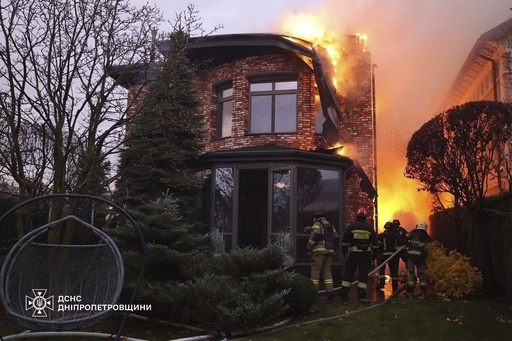
KYIV, Ukraine — In the past week, hostilities in Ukraine have experienced a dramatic surge, marking a pivotal moment in the ongoing war that has been escalating for almost three years. The emergence of heightened uncertainty and fear underlines the severity of the situation, following significant policy shifts by the United States and aggressive military responses from Russia.
The situation escalated when U.S. President Joe Biden decided to alter a long-standing stance, allowing Ukraine to utilize American longer-range missiles within Russian territory. This development came after the U.S., along with South Korea and NATO, reported that North Korean troops were aiding Russian efforts against Ukrainian forces in the Kursk region. However, the details surrounding the newly authorized operational parameters for Ukraine’s missile use remain vague.
On the first day of the week, the Kremlin reacted sharply to the U.S. decision, predicting that the intensified weaponry supplied to Ukraine would exacerbate global tensions. Spokesman Dmitry Peskov expressed concern that the actions taken by the outgoing administration in Washington would only aggravate the conflict and lead to an escalation of tensions.
By midweek, Ukraine reportedly launched several Army Tactical Missile Systems (ATACMS) at an ammunition depot located in Russia’s Bryansk region — a notable first in the conflict whereby Kyiv struck targets on enemy soil. These missile attacks coincided with historic significance, as they occurred on the 1,000th day after Russia’s initial invasion. Russian President Vladimir Putin simultaneously issued a decree lowering the threshold for nuclear weapon usage, signaling that Moscow might respond with nuclear capabilities to even conventional assaults from nations supported by nuclear allies, potentially including Ukrainian actions backed by the U.S.
On the following day, the Biden administration announced another major policy shift, approving the supply of anti-personnel mines to Ukraine, which had previously been avoided amid international opposition citing humanitarian concerns. As Russian tactics evolved, U.S. Defense Secretary Lloyd Austin argued that this decision was necessary to address the new battlefield dynamics. Furthermore, Ukraine employed British Storm Shadow missiles to target sites inside Russia, further exacerbating tensions with the Kremlin. In reaction to the heightened threat of a major Russian airstrike targeting Kyiv, several U.S. and Western embassies temporarily suspended operations.
By Thursday, the Kremlin retaliated by deploying a new intermediate-range ballistic missile, claiming it was a response to Ukraine’s newfound missile capabilities. In an address, Putin asserted that this missile, dubbed the Oreshnik, could outmaneuver U.S. air defense systems due to its incredible speed. Moreover, he suggested that it could target any ally of Ukraine involved in assaults against Russian interests. Following a brief, 30-minute warning issued to Washington, this missile struck a weapons manufacturing facility in the central city of Dnipro.
Friday saw NATO convene an emergency meeting, responding to Ukraine’s urgent request for dialogue amid the heightened conflict. Meanwhile, Ukrainian parliament members suspended a session as security measures were heightened across the capital amid credible threats to government buildings. Polish Prime Minister Donald Tusk remarked on the escalating conflict, stating that Ukraine was entering a “decisive phase” characterized by very dramatic developments.
This week encapsulates an alarming new chapter in the tumultuous conflict, with crucial implications not only for Ukraine but for international security dynamics as well.
